 Leading Blog | Posts by Month |
 Leading Blog | Posts by Month |
12.31.14

LeadershipNow 140: December 2014 Compilation
See more on
Posted by Michael McKinney at 12:46 AM
12.29.14

The 5 Choices to Extraordinary Productivity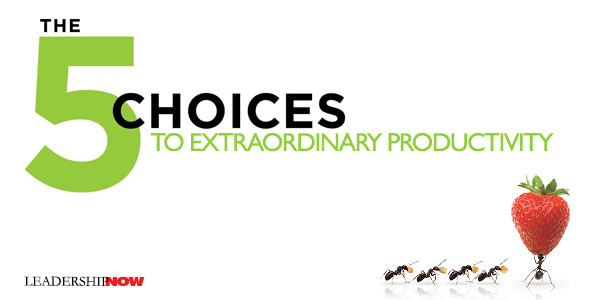
The 5 Choices is a nuts and bolts solution to greater productivity. Ironically, while we live in a time of unprecedented opportunity, we spend almost half—40%—of our time attention and energy on unimportant or irrelevant activities almost insuring that we miss the possibilities all around us. Not only does that leave us feeling empty, but we end the day uncertain that we’ve accomplished what we needed to, worry about things left undone, and end up dreading the day ahead. The authors, Kory Kogon, Adam Merrill, and Leena Rinne, say that the biggest hidden cost in our organizations is people spending their time, attention, and energy on things that don’t drive your most important results. To improve the situation we have five choices to make in three areas: Decision Management, Attention Management, and Energy Management. 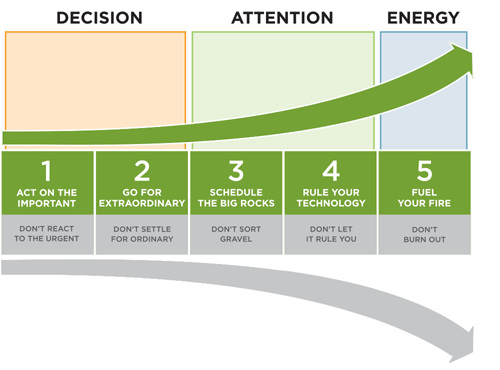
The 5 Choices are: What is my return on this moment? This is really the foundational choice to make. “In today’s world, we can’t just go on the ‘I have a busy life’ autopilot and expect to end up where we want to be.” The authors have offered a Time Matrix model to help us make good decisions about where we spend our time, attention, and energy. Too often we get caught up in Quadrant 4 spending time (or too much time) on the trivial things that contribute nothing to our life. 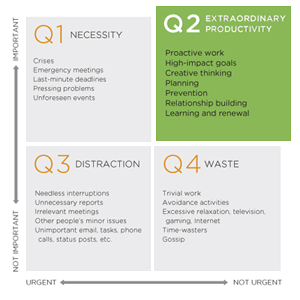 Q1: The Quadrant of Necessity. “These are things that need to be done now and, if not done, could have serious consequences. Q1: The Quadrant of Necessity. “These are things that need to be done now and, if not done, could have serious consequences.
Q3: The Quadrant of Distraction. These are activities marked as urgent that feel like they need to be done now, but there are no serious consequences if you don’t do them. “Many people spend a lot of time in Q3 thinking they’re in Q1. However, they’re just reacting to everything coming their way. They are confusing motion with progress, action with accomplishment.” Q4: The Quadrant of Waste. These are activities that are neither urgent nor important. When we get burned out we often go here for escape. “When we spend a lot of time in Q4, we feel lethargic and aimless. If we stay too long, we can experience depression and even despair.” Q2: The Quadrant of Extraordinary Productivity. These are that activities that will make a real difference in terms of accomplishment and results like proactive work, achieving high-impact goals, creative thinking, planning, prevention, relationship building, learning, and renewal. But you have to make a conscious choice to operate in this quadrant. Most people don’t clarify what is important to them so they never spend the time working on those things. Identify your roles. “Roles are where life happens. It’s where we build relationships, where all the activities that make us human go on.” Craft a role statement for each role. “In today’s environment, the key to true productivity is not to get more things done, but to get the right things done—the important things—with the highest quality you can achieve. It’s not about doing more with less, but doing more about less.” Plan and decide when. There are basically four types of information you need to manage: Appointments (Things you need to do at specific times), Tasks (Things you need to do that are not yet scheduled), Contacts (Information about people you interact with), and Notes or Documents (Other information you want to keep track of that does not fall into one of the other three categories). Organize accordingly. Constant stress, poor diet, lack of exercise and sleep lead to burnout. The five energy drivers are adequate movement, proper diet, sleep, relaxation, and positive social connections. Your brain is your number-one asset in a knowledge-work world. Fuel it properly.   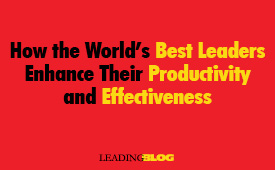
Posted by Michael McKinney at 04:37 PM
12.25.14

The Best Leadership Books of 2014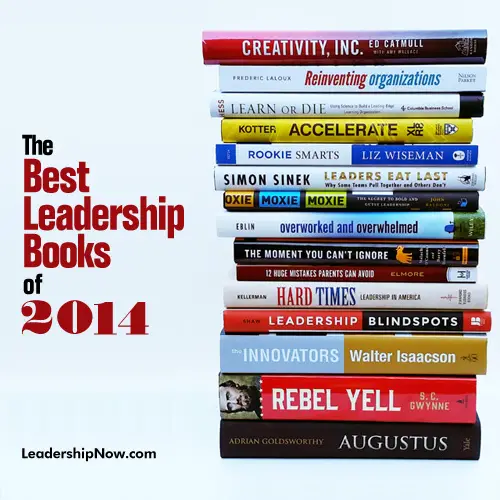
AS LEADERS we must learn and grow. We must be creative and innovative in our organizations but perhaps more importantly, in working on ourselves. The context we lead in requires nothing short of radical personal development. All of the following titles cover an aspect of this need. An environment of rapid change demands more and better questions from us. It means we step out of our comfort zones and take strategic and intentional steps even before the path comes into full view. We can’t see around every corner, but we can listen more purposefully, think more critically, and see more clearly. Respond to a random world with an intentional life. by Ed Catmull and Amy Wallace Creativity, Inc. is an excellent resource full of the practical application of principles and insights. Catmull’s Bottom-line: “Unleashing creativity requires that we loosen controls, accept risk, trust our colleagues, work to clear the path for them, and pay attention to anything that creates fear.” (Blog Post) by Frederic Laloux Based on three years of research, Reinventing Organizations describes the emergence of a new management paradigm, a radically more soulful, purposeful and powerful ways to structure and run any organization. by Edward D. Hess Learn or Die is a book everyone who is serious about learning and growth—personally or organizationally—should read. If you thought you were serious about it, Learn or Die will take you to a whole new level with tools, case studies, and insights that will challenge your commitment to learning. (Blog Post) by John P. Kotter For most companies, the hierarchy is the singular operating system at the heart of the firm. But the reality is, this system simply is not built for an environment where change has become the norm. John Kotter advocates a new system—a second, more agile, network-like structure that operates in concert with the hierarchy to create what he calls a “dual operating system”—one that allows companies to capitalize on rapid-fire strategic challenges and still make their numbers. (Blog Post) by Liz Wiseman Experience has its upside but its downside may hold us back more than we think. What we know will likely impede our ability to learn and therefore perform. We need get off the career ladder and get onto a learning curve. Wiseman says, “We do our best work when we are new to something, striving up that steep ascent.” We need to be a perpetual rookie. (Blog Post) by Simon Sinek The title of the book—Leaders Eat Last—comes from a conversation with a Marine Corps general. He said, “Officers eat last.” Sinek watched as the most junior Marines ate first while the most senior Marines took their place at the back of the line. What’s symbolic in the chow hall is deadly serious on the battlefield: great leaders sacrifice their own comfort—even their own survival—for the good of those in their care. In a world where far too many leaders are looking out for themselves, Sinek offers numerous insights about the kind of sacrifice required to be a great leader. (Blog Post) by John Baldoni Moxie is full of great stories and examples making it immediately relatable and practical. It is structured so that you can thoughtfully and tactically look at each of these areas to see where you can better prepare yourself. Baldoni also provides an appendix that works as a handbook to guide you in this. Questions, examples, additional thoughts and action steps help you access where you are at and what you might need to do next. (Blog Post) by Scott Eblin Solving the Overworked and Overwhelmed problem does not have a one-size-fits-all solution. What Scott Eblin does is guide you in learning to work differently — mindfully — so you are more clear about the results that most merit your time and attention and how you need to show up to offer your highest and best contributions as a professional and as a person. The answer for you is at the intersection of awareness and intention. (Blog Post) by Malachi O'Connor and Barry Dornfeld The Moment You Can’t Ignore helps us to look at those things we often don’t want to address if organizational success is our primary focus. O’Connor and Dornfield note that “Culture is not the solution to every challenge, but it is the source material from which solutions can be drawn.” (Blog Post) by Tim Elmore Tim Elmore understands the development of young people like few others do. He highlights the consequences of the well-intentioned but damaging approaches we sometimes take to prepare our kids for success in life. We must be nurturers and trainers and understand what hinders their growth and what equips them to be great adults. by Barbara Kellerman Barbara Kellerman turns her attention to the often overlooked context in which we lead. Leaders followers, and context form a system of leadership. “More than ever,” writes Kellerman, “it is better—better in practice and better in theory—to focus less on the leader and more on the leadership system.” It is difficult to navigate or change systems without understanding the underlying context they exist in. (Blog Post) by Robert Bruce Shaw Blindspots are not just the result of not viewing ourselves accurately, they can be the result of the way we view he world. Leadership Blindspots helps you to see the various ways we fail to see ourselves and our actions accurately and how we can put mechanisms in place to prevent the filtering and distortion of information for ourselves and our organizations. (Blog Post) Biographies: by Walter Isaacson The Innovators is a biography of more than 60 individuals, partnerships and teams that created the digital revolution. Isaacson makes the point that innovation happens in the real world by teams and not lone geniuses. Our emphasis on heroes exaggerates the contributions of individuals and vastly underestimates incremental improvements over time. Isaacson examines too the role of the organizational forms within which innovation takes place—like Bell Labs. by S. C. Gwynne Rebel Yell is a very well written biography of Stonewall Jackson—a name that still creates controversy. While his best qualities were seen on the field of battle, you will find much you can learn from his leadership—both good and bad. What he might have contributed after the war, we'll never know as he died of complications from pneumonia on May 10, 1863 after being shot by a Confederate sentry during the Battle of Chancellorsville. by Adrian Goldsworthy Goldsworthy’s biography of Augustus is about the man and the social and political climate in which he maneuvered. The author writes, “I place his story in his times and describe the events and personalities that affected him. Shipwrecks, human sacrifice, hairbreadth escapes, unbridled sex, battles on land and at sea, ambushes, family scandals, and above all the unforgiving pursuit of absolute power. Augustus lived out an extraordinary and often terrifying drama.” There are interesting parallels to our own times. Related Interest:
Posted by Michael McKinney at 03:50 PM
12.22.14

Are You Uncomfortable?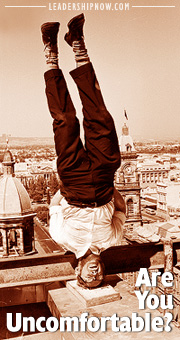 But, there is a correlation between our growth and success in life and the discomfort we’re willing to impose on ourselves. Growth necessarily takes us outside of our comfort zone. In a world of rapid and continual change, radical personal growth is required. We need to get used to it. If we are going to stay relevant, we are going to be uncomfortable. If we are going to grow, we’re going to be uncomfortable. It’s difficult and unsettling. It’s just doesn’t feel right. If a behavior or thinking has gotten us by, we just keep repeating it even if it really isn’t serving us well. We won’t take another look at our underlying assumptions until it lands us in a crisis. Typically, until we are uncomfortable, we don’t see the need to do anything different. We just keep repeating what we know until it’s too late. Staying within our comfort zone limits us. And here’s the thing, we can put ourselves into an uncomfortable position, or in time, it will be thrust upon us—and not on our terms. Every time we avoid the opportunity to grow, the stakes get higher. Discomfort motivates us to change, to explore, to seek out new answers. It spurs on creativity. It gives us confidence. We need to learn to systematically reassess what we are doing and look for alternatives to the way we do what we do. Real growth happens when we go into the unknown knowing that whatever happens, we will come out a different person—even a different organization. We will no longer think and act in the same way we did before. This expands our view. Provides us with new opportunities. Previously unseen solutions. Richard Branson says, “If your vision is to reach a distant beach where, because of the reefs surrounding it, no one has ever set foot, then the chances are that reading the same old charts as everyone else has used isn’t going to get you there either.” When it comes to leadership, we’ve been reading the same charts for too long. Running over the same old ground. We must develop the discipline to challenge—our beliefs, our assumptions, and our “tried and true” responses.
Posted by Michael McKinney at 12:01 AM
12.18.14

quickpoint: Strategy and Leadership WHEN confronted by “unusual uncertainty” as Ben Bernanke put it, leaders need to be able to think and act adaptively. It’s jazz—strategic improvisation. Professor David Teece of University of California Berkeley Hass School of Business shares this in the foreword of Winning the Long Game: A firm’s dynamic capabilities rest on two pillars: (1) the vision and leadership skills of managers, and (2) the cohesion and flexibility of the organization as a whole. Leaders must fashion sound strategies for the enterprise, and the organization itself must be agile enough to adapt as required. An organization’s culture and values are much slower and more difficult to change than its structure or processes, and can hamstring even an excellent strategy if its leaders cannot show the way forward. 
Posted by Michael McKinney at 07:45 PM
12.17.14

5 Leadership Lessons: Richard Branson on Leadership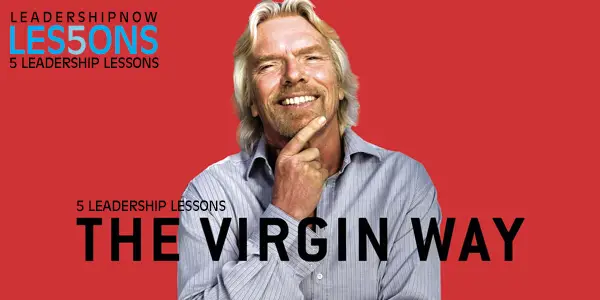
The Virgin Way by Richard Branson takes us over very familiar territory. But then maybe that’s the point. While there is not much that is new, Branson has taken sound principles and demonstrated that – in practice – they work. He quotes Mark Twain, “All ideas are second-hand, consciously and unconsciously drawn from a million outside sources, and daily used by the garnerer with a pride and satisfaction born of the superstition that he originated them.” And indeed they are. Our problem is age-old: putting what we know into practice. Bottom-line: There is no secret sauce.Anyone who puts themselves out there will attract more naysayers than usual. Branson is no exception. His book is enjoyable to read, but it would have been more helpful to provide more nuts-and-bolts of his entrepreneurial adventures—the man behind the hype.

Posted by Michael McKinney at 11:02 PM
12.15.14

Booknotes: Leadership Vertigo, Kidding Ourselves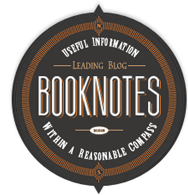 ☙ In Leadership Vertigo, authors S. Max Brown and Tanveer Naseer explain that there is a gap between what we know we should be doing and what we are actually doing. They call it “leadership vertigo” and they attribute it to false signals in our daily perceptions that inform us that we’re moving in a certain direction when in reality we’re not.
☙ In Leadership Vertigo, authors S. Max Brown and Tanveer Naseer explain that there is a gap between what we know we should be doing and what we are actually doing. They call it “leadership vertigo” and they attribute it to false signals in our daily perceptions that inform us that we’re moving in a certain direction when in reality we’re not. ☙ How do we avoid leadership vertigo? If we live the following four principles it will help us to keep our focus where it should be and avoid leadership vertigo: “We need to create a feeling of community, of being a part of something bigger than a collection of individuals. We need to consistently respond with an inquisitive mind, actively listening to our employees to learn from their experiences so that we can encourage them to share their creativity and insights. This is especially true when you are dealing with mistakes and failures. We also need to make sure that our employees see the authenticity behind our words and actions so that they will trust the compassion we exhibit in light of the challenges or obstacles they face.” ☙ Joseph Hallinan deals with the same issues in Kidding Ourselves. He writes, “We engage in self-deception so seamlessly, across so many aspects of our lives, that it seems, to be an inherent human quality—a built-in shock absorber that allows us to adjust to life’s stresses and strains not by altering ourselves, but by altering our perceptions.” He notes that this is not all bad. It allows us to adapt and persevere when the odds are against us. We like to believe that we are in control. It may be an illusion but the results it produces are real—to us. ☙ At the same time, “Once we have an opinion about how something should be, that expectation often colors our perception of how that thing actually is.” (Sounds like leadership vertigo.) The tail begins to wag the dog and our perceptions conform to our expectations. “When we look, we look with a purpose—we don’t look at something; we look for something…We tend to see what we expect to see and to experience what we expect to experience.” ☙ Hallinan expertly draws our attention to a number of ways we deceive ourselves quite unconsciously. “There is very little we are not capable of seeing or believing.” While a little self-deception can lead to optimism, perseverance and success, being mindful of our proclivity for it can save us. “Striving to see the world accurately is immensely better than seeing is inaccurately.” 

Posted by Michael McKinney at 08:39 AM
12.12.14

The Chaos Imperative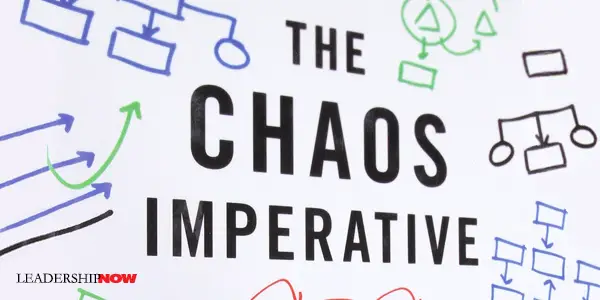
OUR BRAINS need white space to think creatively. We need white space to think more deeply and completely. In The Chaos Imperative, co-authors Ori Brafman and Judah Pollack say that “if we want to foster creativity and innovation in our own lives, we too need a bit of chaos.” We need organization and routines to be sure, but we also need “pockets of chaos”—“places where structure and efficiency are set aside or blocked off to create a more organic process that allows new ideas to come to the fore.” What Brafman calls “organized serendipity.”We could actually use more of this white space not only in our organizations, but in our homes, schools and personal lives as well. In one study, “researchers discovered that the children with more recess time learned more, developed better emotional and cognitive skills, were healthier, behaved better, and managed stress better.” The problem is that it seems counterintuitive to us; like we’re not doing our job; we’re slacking off. But if you, as a teacher, a parent, or a leader think of your job as an opportunity to draw out ideas from others, to listen and to connect, it makes a lot of sense. However, white space is not a shortcut, but a step. Using the stories of Dmitry Mendeleev (created the table of the elements), Gary Starkweather (invented the laser printing), and Albert Einstein (developed the general theory of relativity), the authors write that none of these men could have arrived at the solutions to their problems had they not spent considerable time thinking about the particular problem and mastering their particular field. “But in order to solve the problems they were working on, they needed to create a bit of white space.” Our brains need time to process the information we take in and it is our default mode unless we are focused on a task. We actually interrupt this process when we perform a specific task. “It’s often in those moments when we cede control, when we put down that pen, when we fall asleep, or when we talk offline, that true eureka moments seem to find us.” Introducing chaos into our lives and organizations is inherently messy, so the authors have introduced five rules for managing it: Rule 1: Avoid the Seductive Lure of Data and Measurements. It’s a process. Results will vary. Sometimes you will have more insights and sometimes you won’t have any. Rule 3: Make White Space Productive. Here are a few tips: You first have to put in the work. A slacker won’t necessarily benefit from white space. Get up and move. Get some exercise. Take a walk. Create a micro white space—a minute or two—think before you speak. Rule 4: Embrace Unusual Suspects. Intentionally seek out those with different views and approaches. Different doesn’t mean crazy. Break down silos. Get people from around the organization to contribute. Rule 5: Organize Serendipity. Create openness. Allow people to bump into one another.
Of Related Interest: 
Posted by Michael McKinney at 12:52 AM
12.11.14

quickpoint: Napoleon on Self-Control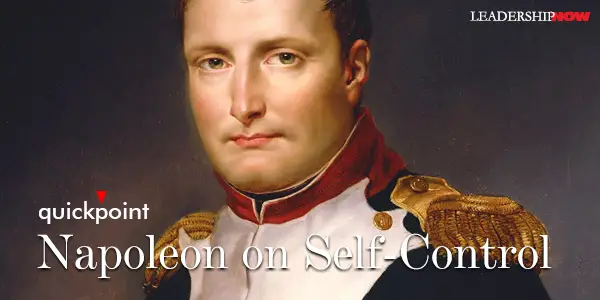
In my own case it’s taken me years to cultivate self-control to prevent my emotions from betraying themselves. Only a short time ago I was the conqueror of the world, commanding the largest and finest army of modern times. That’s all gone now! To think I kept all my composure, I might even say preserved my unvarying high spirits … You don’t think that my heart is less sensitive than those of other men. I’m a very kind man but since my earliest youth I have devoted myself to silencing that chord within me that never yields a sound now. If anyone told me when I was about to begin a battle that my mistress whom I loved to distraction was breathing her last, it would leave me cold. Yet my grief would be just as great as if I had the time. Without this self-control, do you think I could have done all I’ve done? Roberts concludes: “So rigid a control on one’s emotions might seem distasteful to the modern temperament, but at the time it was considered a classical virtue. It undoubtedly helped Napoleon deal with his extraordinary reversals of fortune.” 
Posted by Michael McKinney at 12:30 AM
12.10.14

Eight Critical Questions for Leading with IntentionYour leadership effectiveness is a direct result of the level of intention with which you operate.In Leading With Intention, author Mindy Hall says leading with intention means “consciously deciding to lead by design rather than by default; being mindful of who it is you want to be and then living into that picture twenty-four hours a day. It is about seeing opportunities every day, in every interaction, to shape the tone, the experience, and the outcome of those interactions.” Everything you do sends a message. It begins with self-awareness. “The rest is practice, consistency, and continuous effort.” Here are eight critical questions from Leading With Intention that the intentional leader needs to ask:

Posted by Michael McKinney at 01:14 PM
12.08.14

Things You Can Do to Build Their Future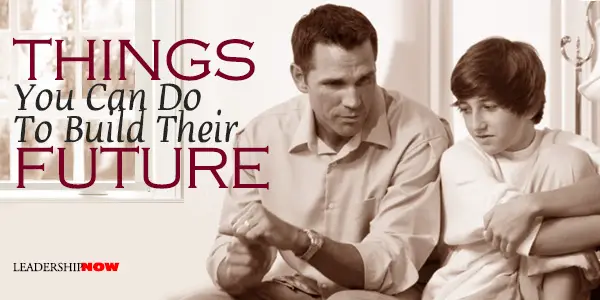
THIS last summer, my son Mark attended a youth leadership conference for the first time. I attended the opening session with him in a room of about 300 kids that all seemed to know each other. Mark is a very personable and approachable young man but as a parent I naturally thought, “How is he going to get up and running in a group this size? He doesn’t know anyone.” But the opening session wasn’t over for 30-seconds when a young man walked up and said, “I’m Hunter. Would you like to hang out with us?” And they were off and never looked back. As I walked away, I thought that this is the kind of leadership that makes a difference in people’s lives. It’s leading from where you are, without title and without fanfare. Just doing the right thing. It’s the little things like this that we teach our kids that enrich their lives and those of others. Leadership begins in the home. It’s where we have the greatest impact on the future. Here’s a few things we can do: We can help them to look further out. Help them see the long-term effects of the decisions they make today. Define a future and help them to line up the decisions needed to get there. It will help them to gain a perspective on life. We can take the time to talk about their experiences. Help them to see them in the most constructive way possible. While some rules are important, principles will last them a lifetime. Rules are easy to churn out. Principles take time to teach and integrate into a person’s life. We can teach them that connection with others matters and that’s not done behind a screen. People are experienced when you can look into their eyes. Life is experienced when you can see what is going on around you—both the sights and sounds. One of the greatest gifts you can give someone is your full attention. We can give them responsibility. Help them to value contribution over consumption. If not, we can be guilty of what President George W. Bush called “the soft bigotry of low expectations.” He added, “No child in America should be segregated by low expectations.” Help them raise the bar in their life and thereby help others to discover the possibilities in theirs. And the most important thing we can do is to set an example of the kind of people we want them to become. Remember we are training future leaders not just raising kids. It’s an investment.
We can’t give to others without being affected positively ourselves. And this is the secret of giving: When we make the world better for others, you make the world better for yourself.
Posted by Michael McKinney at 01:27 PM
12.05.14

The Culture Engine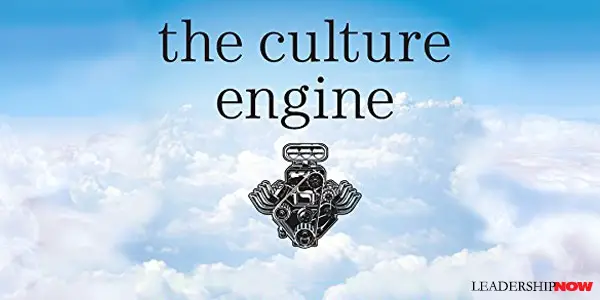
CULTURE is the engine of any organization. It is the force behind everything that happens. It empowers behaviors that communicate who we are whether we like it or not. Getting it right is critical. How do we create a culture that brings out the best in people? Chris Edmonds says that it can be done by the creation of an organizational constitution. “An organizational constitution is a formal document that states the company’s guiding principles and behaviors.” It describes how your organization operates. It makes clear what our expectations are and how we are to achieve them. We have to begin by understanding the truth of how our organization operates. Are we where we want to be? To do that you have to de-insulate yourself, genuinely connect with team members, seek out the truth-tellers, and share your assumptions and what you are learning. Whether we like it or not, we have to “understand that people are acting exactly as you would expect. The way they are behaving now is being reinforced consistently, albeit maybe unintentionally.” In other words, if you are going to define a better way, you have to live a better way. Leaders define the culture. So it’s critical that you live the values and behaviors in your constitution both in and out of the organization. “This scrutiny is unfair, yet it is completely understandable and it is inevitable. You need to expect it and live up to it.” The first element of your constitution is your organization's reason for being. Your purpose statement should be a clear statement of what the company does, for whom, and why. The second element is the “positive values and behaviors you want every leader and employee to demonstrate in every interaction with team members and customers.” These have to be defined in behavioral terms so people have something concrete to measure themselves against. Have a "good attitude" is not specific enough. You can't manage attitudes but you can manage behaviors. The third element is strategy. The strategy represents the path to company goals and expectations. “Every team member should be able to describe how his or her daily projects, goals, and tasks contribute to the accomplishment of team or company strategies.” Edmonds then explains how to manage, measure, and coach others to embrace the organizational constitution. “In high-performance, values-aligned organizations, values accountability is of equal importance with performance accountability. Leaders spend as much time, if not more, communicating, modeling, and reinforcing the department’s values and valued behaviors.” The Culture Engine provides tools in each chapter for making this happen in your organization. The ideas here are not limited to just a few leaders at the top. At any level in the organization, you can make a difference within your sphere of influence. As a leader, you should be intentional about the culture you are responsible to and for.

Posted by Michael McKinney at 01:01 AM
12.03.14

Efficiency is the Wrong Mindset for a Leader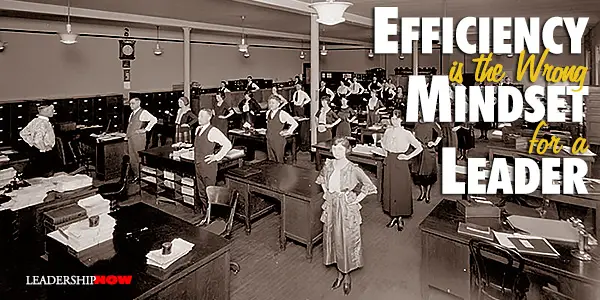
EFFICIENCY always seems like the right answer. It’s reflexive. Faster. Easier. Who doesn’t want that? And yet while efficiency is critical and often a competitive advantage, it is a problem when it becomes a mindset that is applied to everything we do; when it becomes an excuse for our lack of real connection. Faster and easier is not always better. As leaders, we have to know the difference. Some things are better over time. There is no such thing as efficient leadership. If efficiency is digital, leadership is analog. Leadership is about influence and mobilizing people to achieve a common goal. This is done through relationships. Relationships do not benefit from efficiency. Much of the practice of leadership is a process. If you rush the process you miss the fundamental issues that create meaning and engagement. Leaders are action-oriented people to be sure. Holding another meeting, having critical conversations, and reinforcing commitments, principles, and values can seem like a waste of time especially when you see the goal and the need to get moving so clearly. But if you don’t take the time to do these things, you may end up on your own—leading no one. Leadership does not exist until we create a relationship with another person. It is our relationships that result in the actions we seek. The efficiency—quality and flexibility—you get from people is primarily based on the relationship you have with them. Creating partners takes time. Distributing ownership takes time. The idea is to build relationships so that people in your sphere of influence, flourish. Growth is rarely an efficient affair. It’s almost never a straight line. People have emotions, feelings, and history and that takes time to understand and work with. If we are to grow and learn and innovate we have to leave room for the inefficient. Growth is born in the question. Efficiency rarely leaves room for questions. It is a tension that has to be managed. We have to learn to maximize efficiency without restricting growth. We know when it comes to people, better doesn’t always mean faster. Easier isn’t always the best way. But if we approach the practice of leadership with an efficiency-based mindset, we will look for shortcuts through a process that necessarily requires time and patience. The straight line can miss so much. The crooked path often adds the depth and color to our life that we can’t get in any other way. Good relationships cultivated over time will bring you the level of commitment you want when you need it the most. If you haven't taken the time to build relationships all you have is a gun. Take the time now to build trusting, caring relationships with the people you serve.
Posted by Michael McKinney at 01:07 AM
12.01.14

First Look: Leadership Books for December 2014Here's a look at some of the best leadership books to be released in December.




For bulk orders call 1-800-423-8273  Build your leadership library with these specials on over 100 titles. All titles are at least 40% off the list price and are available only in limited quantities. “ I think of life as a good book. The further you get into it, the more it begins to make sense.” — Harold Kushner
Posted by Michael McKinney at 08:46 AM
|
BUILD YOUR KNOWLEDGE


How to Do Your Start-Up Right STRAIGHT TALK FOR START-UPS 
Grow Your Leadership Skills NEW AND UPCOMING LEADERSHIP BOOKS 
Leadership Minute BITE-SIZE CONCEPTS YOU CAN CHEW ON 
Classic Leadership Books BOOKS TO READ BEFORE YOU LEAD |
|